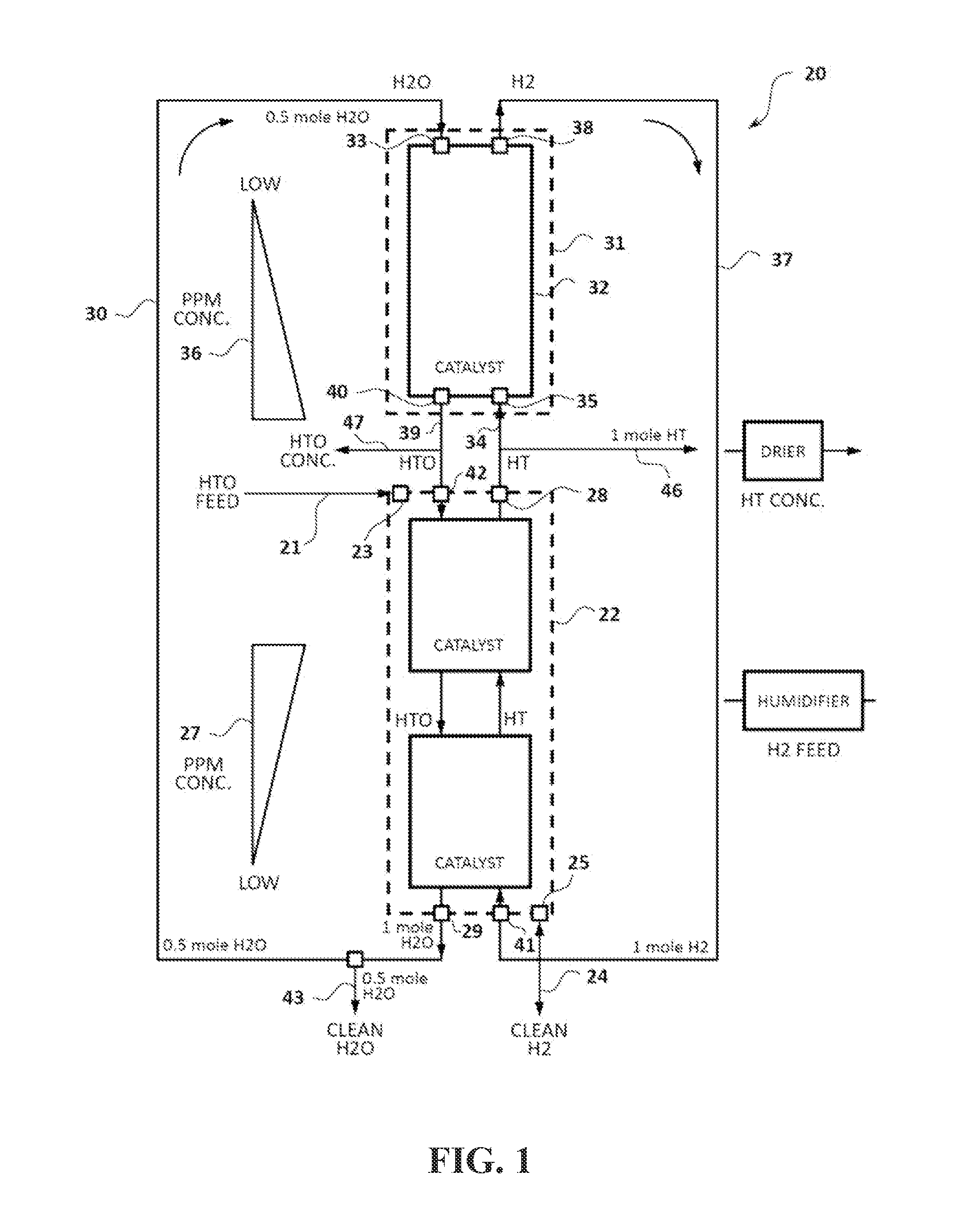The use of this technology has been limited because it is not scalable to large throughputs.
In a typical water detritiation application for a
nuclear reactor the tritium
throughput is miniscule by comparison to an ITER scale fusion
machine; however the quantity of water to be processed is very large (i.e. millions of tons).
The current state of the art for large scale
hydrogen isotope separation cryogenic
distillation processes has the following drawbacks:a. handling of liquid cryogens with associated hazards, such as
high pressure potential upon warm-up and
evaporation; thermal stresses due to very low temperature
process conditions; requirement for a vacuum insulated cold-box vessel to contain the cryogenic equipment;b. large
liquid hydrogen and tritium inventory, mostly tied up in
distillation column packing;c. potential for blockage of process lines due to freezing of impurities;d. complex and costly
processing facility;e. complex operation and maintenance;f. non-modular process making it difficult to
upgrade and to keep equipment spares; andg. requires batch operated dryers and a
liquid nitrogen adsorber to purify feed to the cryogenic
distillation cascade.<
Large scale
membrane diffusion has not been used in the past for
hydrogen isotope separation due to a combination of commercial
unavailability and the fact that enriching tritium from a few parts per million to 99+% purity requires a large number of discrete compression stages.
Thermal
diffusion has been used successfully for small scale tritium separation, even up to 99+% pure tritium, but cannot be easily scaled for large throughput.
The alternative of constructing many small thermal
diffusion columns in parallel is unattractive when the throughput requirement is large.
Thermal diffusion columns also have low thermodynamic efficiency, which, while unimportant at small scale, becomes problematic at large scale.
While this system can be effective at removing tritium from
tritiated water, its reliance on an electrolyzer and a recombiner adds to the complexity and costs associated with running the system.
Further, electrolyzers and recombiners can negatively
impact the efficiency of converting
tritiated water into detritiated water.
This is especially problematic in instances where large amounts of
tritiated water needs to be processed in a relatively short time period, such as cleaning up after a
nuclear reactor accident.
What this application does not disclose is a system and method to improve on existing tritium separation systems using a mixed
bed catalytic exchange process in a
Liquid Phase Catalytic Exchange /
Closed Loop Continuous Process (LPCE / CLCP) system, that operates as a low temperature and low pressure continuous balanced process, designed to rapidly extract and isolate isotope specific products without generating unwanted products in the form of new waste streams.
What this application does not disclose is a system and method to improve on existing tritium separation systems using a mixed
bed catalytic exchange process in a
Liquid Phase Catalytic Exchange /
Closed Loop Continuous Process (LPCE / CLCP) system, that operates as a low temperature and low pressure continuous balanced process, designed to rapidly and safely extract and isolate isotope specific products without generating unwanted products in the form of new waste streams.
The Pt / SDB has good activity, yet it shows low strength and
small particle size.
What this application does not disclose is a system and method to improve on existing tritium separation systems using a mixed bed catalytic exchange process in a Liquid Phase Catalytic Exchange / Closed Loop Continuous Process (LPCE / CLCP) system, that operates as a low temperature and low pressure continuous balanced process, designed to rapidly extract and isolate isotope specific products without generating unwanted products in the form of new waste streams.
 Login to View More
Login to View More  Login to View More
Login to View More 


